Hello all,
Allen what did we start way back then?
Could make a million subjective & objective comments, however I'm quite certain my dry bones would be discovered hunch over a worn out keyboard.
So..i still have my 66II's (if you will) in dry storage.
I just found the original sales brochure from 1979 in mint unwrinkled condition!
I still have 2 complete sets of drivers and crossovers sets in factory shipped/sealed boxes!! I opened them up and could swear i heard the sounds of The Wrecking Crew working on something in the studio, slowly drifting up from the boxes, heh. Not sure but the tune may have been "If i could only teach the world to sing"
Just dropped in to say Happy Holidays and joyful Holiday sounds to all you posters!
Allen what did we start way back then?
Could make a million subjective & objective comments, however I'm quite certain my dry bones would be discovered hunch over a worn out keyboard.
So..i still have my 66II's (if you will) in dry storage.
I just found the original sales brochure from 1979 in mint unwrinkled condition!
I still have 2 complete sets of drivers and crossovers sets in factory shipped/sealed boxes!! I opened them up and could swear i heard the sounds of The Wrecking Crew working on something in the studio, slowly drifting up from the boxes, heh. Not sure but the tune may have been "If i could only teach the world to sing"
Just dropped in to say Happy Holidays and joyful Holiday sounds to all you posters!
Attachments
-
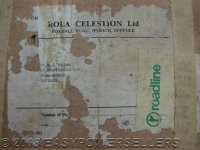 dsc03852wtmk.jpg26.3 KB · Views: 221
dsc03852wtmk.jpg26.3 KB · Views: 221 -
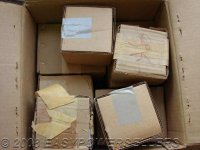 dsc03853wtmk.jpg23.9 KB · Views: 219
dsc03853wtmk.jpg23.9 KB · Views: 219 -
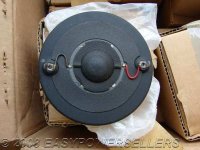 dsc03854wtmk.jpg29.1 KB · Views: 214
dsc03854wtmk.jpg29.1 KB · Views: 214 -
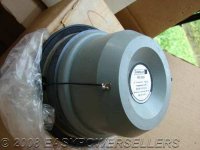 dsc03856wtmk.jpg23 KB · Views: 205
dsc03856wtmk.jpg23 KB · Views: 205 -
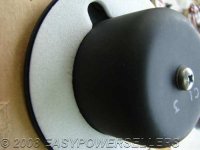 dsc03858wtmk.jpg18.1 KB · Views: 215
dsc03858wtmk.jpg18.1 KB · Views: 215 -
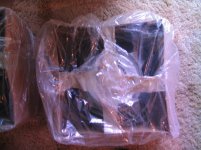 IMG_1106.jpg358.8 KB · Views: 82
IMG_1106.jpg358.8 KB · Views: 82 -
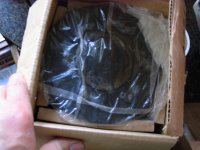 IMG_1108.JPG631.3 KB · Views: 71
IMG_1108.JPG631.3 KB · Views: 71 -
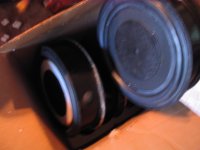 IMG_1112.JPG560.9 KB · Views: 87
IMG_1112.JPG560.9 KB · Views: 87 -
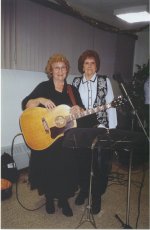 mom & alice 11-5-05.jpg573.2 KB · Views: 92
mom & alice 11-5-05.jpg573.2 KB · Views: 92 -
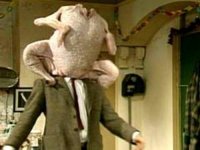 mr-bean-cooking-turkey-large-msg-117649066053.jpg21.5 KB · Views: 87
mr-bean-cooking-turkey-large-msg-117649066053.jpg21.5 KB · Views: 87
Just to keep this long thread going. I just got a pair of 66's and am testing each driver to make sure they're OK and noticed something really strange.
The crossover is connected to my stereo and with no drivers connected there is sound coming from it, at a low level for sure but it actually makes sound. I've never seen or heard this before, if I squeeze the large coils the music becomes more clear.
Has anyone else noticed this?
Also one speaker is from 74 and the other from 75. One has 2 60uf caps and the other has 2 72uf. One has an md500 and the other what I think is an mf500.
The crossover is connected to my stereo and with no drivers connected there is sound coming from it, at a low level for sure but it actually makes sound. I've never seen or heard this before, if I squeeze the large coils the music becomes more clear.
Has anyone else noticed this?
Also one speaker is from 74 and the other from 75. One has 2 60uf caps and the other has 2 72uf. One has an md500 and the other what I think is an mf500.
Replies to: kenp3 , chartz , tonedef2 , reggie , Quin .
I have had so much that needs to be done in life that I have not posted here for a long time ,
though I have looked occasionally at this thread to keep up with what is posted ,
and now reading one which needs reply I will ,
and also I will comment briefly on a few others:
--- --- --- --- --- --- --- --- --- --- ---
Hi kenp3 , ... and anyone else interested in trying that crossover listening test ,
What you have found is not surprising , but how you are doing it is very risky ,
as you may damage the output stage of your Amplifier if you continue.
That it is not burnt out so far is likely the result of the Series resistances of the inductors , and whatever increased by age ESRs in the capacitors.
I posted about safe ways to test the crossover earlier in this thread ,
and I will repeat here sufficient of that for you and anyone else interested to listen to what you found to be able to proceed without damaging your amplifier's output stages.
Buy some of those low price rectangular ceramic wirewound resistors , or whatever similar you may prefer.
For the Woofer circuit use 4.7 ohm in 10 watt.
For the Midrange circuit use 6.8 ohm in 10 watt , { 7.5 ohm is OK if you have some in 10 watt }.
For the Tweeter circuit use 3.9 ohm or 4.7 ohm , and in 5 watt will be sufficient as there is less signal above 5kHz in almost all Music recordings than in the lower frequency ranges ,
but you can use in 10 watt if you want to.
Solder or otherwise securely clamp the resistors to the output wires where you disconnect each of the above Drivers.
This provides a resistive Load for the crossover.
Most loudspeakers are not designed to have their crossovers driven with no Loads connected , and the Celestion 66 , and 44 , certainly are not.
The Celestion crossover is highly resonant Electrically , { and somewhat resonant Mechanically as kenp3 has found }.
This electrically resonant crossover needs Loads connected , because when no loads there are several frequency areas that are short circuits through the combinations of inductors and capacitors ...
... that is: frequencies which will draw very high current from the amplifier , and usually more than it is designed to supply.
The audible mechanical resonances will still be audible when the resistors are connected.
The mechanical resonances are the vibrations from the partially loosely wound inductors primarily ,
though likely also some from those old capacitors whose cases may be vibrating when the signal voltages alternate across the ends of the capacitor ,
and particularly so if some of the electrolyte has evaporated as there will be less mechanical Damping of the cases.
Try pressing , gently at first , then a little more firmly if it seems the capacitor case will not break , and listen for changes as kenp3 heard when he pressed on the inductors.
Reducing mechanical resonances is one of the things that we pay extra for with the specialist high priced Audio capacitors ,
as even plastic film caps mechanically resonate though a lot less audibly in a test like kenp3 has done ,
but still sufficiently to cause colouration of the signal through them to the driver when connected , and which is then heard.
Some inductor manufacturers sell potted or baked or wax dipped inductors ,
all ways to secure the slightly loose wire so that it will not vibrate when signal Current levels vary through it.
Such vibration , even when not as mechanically audible as kenp3 has found , is still sufficient as magnetic field interference to cause colouration of the signal audible through the driver when connected.
kenp3 , if you find your old capacitors are also mechanically resonating ,
then likely they will be very deteriorated and should be replaced.
If you decide to keep those 60uF and 72uF caps , which I am presuming are in the woofer circuit ,
then disconnect one of the 60 and one of the 72 and put each into the other crossover in such positions as to have the 60uF at the output - where the woofer is connected ,
and the 72uF in the center - where connected with one end at the two inductors junction connection.
That will give the better option for filtering than in opposite positions ,
and will cause both loudspeakers to sound closer to same in the lower midrange ... if all those capacitors are still working well.
Alternate is to put new 68uF at output and new 75uF in center position if you cannot easily obtain 72uF caps new.
You can then listen to hear if any significant differences between the two different mid-domes ... if the capacitors in the midrange circuit are still working well.
--- --- --- --- --- --- --- --- --- --- ---
Bon Jour chartz ,
and I hope you had a good Holiday season !
I got some rest , but not enough ...
--- --- --- --- --- --- --- --- --- --- ---
Hi tonedef2 ,
long time quiet , but good to read from you again !
I'll guess that you are not one of the Ladies in the photo with the guitar ,
and perhaps you are the fellow with the skinned chook as a head , or is it a Turkey ?
You could post and tell us if you like the sound with whatever brand of capacitors you decided to install ,
and if you think any better could be achieved ... ?
--- --- --- --- --- --- --- --- --- --- ---
G'day reggie ,
I long ago read both your messages to me , and I apologize that I have not replied.
There is a little to add about your substitution of midrange driver , and a lot I will state about that woofer you bought , as better can be achieved.
I'll post about that when I get sufficient time available.
For now , and particularly to follow that Quin found the midrange circuit to couple the back-emf resonance from the mid-dome sufficiently into the tweeter circuit to be audible ,
I advise that you Tri-wire , as that should reduce audible coupling to significant degree.
Given your externally placed crossover , and particularly those mechanically damped new inductors and new quality capacitors ,
there should not be any , or extremely little , of the crossover playing music that kenp3 heard with his old crossovers.
--- --- --- --- --- --- --- --- --- --- ---
'ullo Quin ,
You have been doing some good DIY !
Each of us quite obviously prefers to hear reproduced sound in different ways ,
however what you have found is interesting , and there are a few points I was intending to comment about ,
and which I will get to when I get sufficient time available.
I have had so much that needs to be done in life that I have not posted here for a long time ,
though I have looked occasionally at this thread to keep up with what is posted ,
and now reading one which needs reply I will ,
and also I will comment briefly on a few others:
--- --- --- --- --- --- --- --- --- --- ---
Hi kenp3 , ... and anyone else interested in trying that crossover listening test ,
What you have found is not surprising , but how you are doing it is very risky ,
as you may damage the output stage of your Amplifier if you continue.
That it is not burnt out so far is likely the result of the Series resistances of the inductors , and whatever increased by age ESRs in the capacitors.
I posted about safe ways to test the crossover earlier in this thread ,
and I will repeat here sufficient of that for you and anyone else interested to listen to what you found to be able to proceed without damaging your amplifier's output stages.
Buy some of those low price rectangular ceramic wirewound resistors , or whatever similar you may prefer.
For the Woofer circuit use 4.7 ohm in 10 watt.
For the Midrange circuit use 6.8 ohm in 10 watt , { 7.5 ohm is OK if you have some in 10 watt }.
For the Tweeter circuit use 3.9 ohm or 4.7 ohm , and in 5 watt will be sufficient as there is less signal above 5kHz in almost all Music recordings than in the lower frequency ranges ,
but you can use in 10 watt if you want to.
Solder or otherwise securely clamp the resistors to the output wires where you disconnect each of the above Drivers.
This provides a resistive Load for the crossover.
Most loudspeakers are not designed to have their crossovers driven with no Loads connected , and the Celestion 66 , and 44 , certainly are not.
The Celestion crossover is highly resonant Electrically , { and somewhat resonant Mechanically as kenp3 has found }.
This electrically resonant crossover needs Loads connected , because when no loads there are several frequency areas that are short circuits through the combinations of inductors and capacitors ...
... that is: frequencies which will draw very high current from the amplifier , and usually more than it is designed to supply.
The audible mechanical resonances will still be audible when the resistors are connected.
The mechanical resonances are the vibrations from the partially loosely wound inductors primarily ,
though likely also some from those old capacitors whose cases may be vibrating when the signal voltages alternate across the ends of the capacitor ,
and particularly so if some of the electrolyte has evaporated as there will be less mechanical Damping of the cases.
Try pressing , gently at first , then a little more firmly if it seems the capacitor case will not break , and listen for changes as kenp3 heard when he pressed on the inductors.
Reducing mechanical resonances is one of the things that we pay extra for with the specialist high priced Audio capacitors ,
as even plastic film caps mechanically resonate though a lot less audibly in a test like kenp3 has done ,
but still sufficiently to cause colouration of the signal through them to the driver when connected , and which is then heard.
Some inductor manufacturers sell potted or baked or wax dipped inductors ,
all ways to secure the slightly loose wire so that it will not vibrate when signal Current levels vary through it.
Such vibration , even when not as mechanically audible as kenp3 has found , is still sufficient as magnetic field interference to cause colouration of the signal audible through the driver when connected.
kenp3 , if you find your old capacitors are also mechanically resonating ,
then likely they will be very deteriorated and should be replaced.
If you decide to keep those 60uF and 72uF caps , which I am presuming are in the woofer circuit ,
then disconnect one of the 60 and one of the 72 and put each into the other crossover in such positions as to have the 60uF at the output - where the woofer is connected ,
and the 72uF in the center - where connected with one end at the two inductors junction connection.
That will give the better option for filtering than in opposite positions ,
and will cause both loudspeakers to sound closer to same in the lower midrange ... if all those capacitors are still working well.
Alternate is to put new 68uF at output and new 75uF in center position if you cannot easily obtain 72uF caps new.
You can then listen to hear if any significant differences between the two different mid-domes ... if the capacitors in the midrange circuit are still working well.
--- --- --- --- --- --- --- --- --- --- ---
Bon Jour chartz ,
and I hope you had a good Holiday season !
I got some rest , but not enough ...
--- --- --- --- --- --- --- --- --- --- ---
Hi tonedef2 ,
long time quiet , but good to read from you again !
I'll guess that you are not one of the Ladies in the photo with the guitar ,
and perhaps you are the fellow with the skinned chook as a head , or is it a Turkey ?
You could post and tell us if you like the sound with whatever brand of capacitors you decided to install ,
and if you think any better could be achieved ... ?
--- --- --- --- --- --- --- --- --- --- ---
G'day reggie ,
I long ago read both your messages to me , and I apologize that I have not replied.
There is a little to add about your substitution of midrange driver , and a lot I will state about that woofer you bought , as better can be achieved.
I'll post about that when I get sufficient time available.
For now , and particularly to follow that Quin found the midrange circuit to couple the back-emf resonance from the mid-dome sufficiently into the tweeter circuit to be audible ,
I advise that you Tri-wire , as that should reduce audible coupling to significant degree.
Given your externally placed crossover , and particularly those mechanically damped new inductors and new quality capacitors ,
there should not be any , or extremely little , of the crossover playing music that kenp3 heard with his old crossovers.
--- --- --- --- --- --- --- --- --- --- ---
'ullo Quin ,
You have been doing some good DIY !
Each of us quite obviously prefers to hear reproduced sound in different ways ,
however what you have found is interesting , and there are a few points I was intending to comment about ,
and which I will get to when I get sufficient time available.
Last edited:
Hi all,
One of my beloved T1600 bass drivers (from Ditton 44, 66 etc.) has developed a scratchy voice coil, all of a sudden, from nowhere, and without being driven hard, and it sounds like the devil scratching his pubes. (Nice image I know - you can have that one for free!)
What to do? I have tried to free it by moving the driver in and out within it's normal range of motion, but it seems to just be knackered. How does that even happen?
One of my beloved T1600 bass drivers (from Ditton 44, 66 etc.) has developed a scratchy voice coil, all of a sudden, from nowhere, and without being driven hard, and it sounds like the devil scratching his pubes. (Nice image I know - you can have that one for free!)
What to do? I have tried to free it by moving the driver in and out within it's normal range of motion, but it seems to just be knackered. How does that even happen?
Thanks Pochago, but it's well past that stage I think. The weight of rotating alone won't cut it. The scratching seems to be all around, and not even that subtle. I actually can't understand why it's decided at the age of 43, the same age as me, to start falling apart. They have sounded nothing short of incredible until now. Is it a mid life crisis I can't help asking?
'ullo Lucas ,
I have only found your post today as I haven't had time to look at DIY audio for a while.
I also found your other Thread about this cone-scrape problem.
I am pleased that some-one was able to assist you , because I do not have the experience to try what he recommended to you.
It is good that the circumstance was what he thought , and very fortunate that you were able to fix it , because such is delicate surgery !
It will be worth your while to buy any old woofers of this type from any of Celestion 25 or 44 or 66 -{ 25 has exactly the same woofer as 44 and 66 }-
because other types of age-related problems can occur which are much more difficult to fix.
Yes , any old woofers you buy may have similar problems - unfortunately that is the risk with restoring Vintage loudspeakers.
EDIT: For other members whose woofers may be developing this problem ,
here is a Link to Lucas's other Thread titled:
Celestion Ditton 44/ 66 T1600 coil rub
http://www.diyaudio.com/forums/mult...-ditton-44-66-t1600-coil-rub.html#post5017102
I have only found your post today as I haven't had time to look at DIY audio for a while.
I also found your other Thread about this cone-scrape problem.
I am pleased that some-one was able to assist you , because I do not have the experience to try what he recommended to you.
It is good that the circumstance was what he thought , and very fortunate that you were able to fix it , because such is delicate surgery !
It will be worth your while to buy any old woofers of this type from any of Celestion 25 or 44 or 66 -{ 25 has exactly the same woofer as 44 and 66 }-
because other types of age-related problems can occur which are much more difficult to fix.
Yes , any old woofers you buy may have similar problems - unfortunately that is the risk with restoring Vintage loudspeakers.
EDIT: For other members whose woofers may be developing this problem ,
here is a Link to Lucas's other Thread titled:
Celestion Ditton 44/ 66 T1600 coil rub
http://www.diyaudio.com/forums/mult...-ditton-44-66-t1600-coil-rub.html#post5017102
Last edited:
Hello Jacques, there is still a good market for the Ditton 66. Sell your speakers and find the joy in making your own creation. Even if the speakers you make are not perfect they can always be a work in progress, an adventure. Creativity and optimism are some of the best aspects of life.
Hi everyone!
I've read as much as I could on this thread but still don't quite know if there is an answer to my question in here. I Bought a pair of early 66's (serial numbers 7114 and 7115, the woofers are light brown/beige). Both tweeters were toasted and both md500's lost their membranes (black). I started by replacing both membrane/coil assemblies of the tweeters and mids (parts bought from ninomusic here in France). I tested the speakers at very low volume because I expected the caps in the crossover to be bad. There was sound although not great. I went ahead and redid all the wiring with some good quality (nothing too fancy) cables, changed the poor quality terminals and changed the caps on the crossover (wooden panel with binding posts, no circuit). I had the 4µF, and two 72µF black alcaps, a 24µF red electrolytic with a 6µF alcap in parallel and the two stacks of paralleled light blue (ceramic ??) caps. Both 72µF read over 120µF and other Alcaps were way off as well. I changed all the electrolytics in the mid and bass range with modern Elcaps from falcon acoustics (as suggested I replaced the 30µF with a 24µF cap) and replaced the two values for the tweeter with SOLEN 1% MKP caps.
The result was quite amazing at low volumes although bass could be neater (I still have to install spikes because they are directly on a tile flour that isn't very flat so that might still improve). When pushing the volume a bit I heard that at some frequencies the md500 were making a very unpleasant sound (I could qualify it as distortion but don't know if that is he right word). It sounds like it's vibrating against something. Both speakers have it but not at the same frequencies and not in the same amount. I connected my signal generator to my amp and went through all frequencies, it seems to be the worst at 600Hz and 1kHz.
I've read as much as I could on this thread but still don't quite know if there is an answer to my question in here. I Bought a pair of early 66's (serial numbers 7114 and 7115, the woofers are light brown/beige). Both tweeters were toasted and both md500's lost their membranes (black). I started by replacing both membrane/coil assemblies of the tweeters and mids (parts bought from ninomusic here in France). I tested the speakers at very low volume because I expected the caps in the crossover to be bad. There was sound although not great. I went ahead and redid all the wiring with some good quality (nothing too fancy) cables, changed the poor quality terminals and changed the caps on the crossover (wooden panel with binding posts, no circuit). I had the 4µF, and two 72µF black alcaps, a 24µF red electrolytic with a 6µF alcap in parallel and the two stacks of paralleled light blue (ceramic ??) caps. Both 72µF read over 120µF and other Alcaps were way off as well. I changed all the electrolytics in the mid and bass range with modern Elcaps from falcon acoustics (as suggested I replaced the 30µF with a 24µF cap) and replaced the two values for the tweeter with SOLEN 1% MKP caps.
The result was quite amazing at low volumes although bass could be neater (I still have to install spikes because they are directly on a tile flour that isn't very flat so that might still improve). When pushing the volume a bit I heard that at some frequencies the md500 were making a very unpleasant sound (I could qualify it as distortion but don't know if that is he right word). It sounds like it's vibrating against something. Both speakers have it but not at the same frequencies and not in the same amount. I connected my signal generator to my amp and went through all frequencies, it seems to be the worst at 600Hz and 1kHz.
Test the mid-domes - then repair or replace the mid-domes.
Hi Depaj ,
(1)- disconnect the two mid-domes from the crossover and test both with your sweep generator with no crossover components in the circuit.
If the buzz frequencies are still there, then you will have to take the domes out of their chassis and look for small particles that could have got between the Voice-coil and the inside of the magnet's circular gap. That gap needs to be completely empty and clean.
Alternately, the voice-coils may not be correctly centered in the circular gaps.
If the voice-coil touches the sides of the magnet it will buzz , and eventually the insulation will wear off the wire of the coil, and then the driver will not work.
It is difficult and requires a lot of skill to correctly place a mid-dome -{ or a tweeter dome )- in a magnet gap in exact center so it will not touch the sides of the magnet inside.
(2)- if the mid-domes work with no buzz when out of the cross-over , then the buzz will likely be a mechanical fault caused by something loose in the crossover - look at the Inductors - are they all securely fixed in place ? or is one or more loose enough to vibrate when the volume is increased ?
Look at the capacitors that you replaced - are they all fixed securely in place ? or is one or more loose enough to vibrate against something when the volume is increased ?
Mechanical vibration can convert to electrical signal and buzz through a driver , because mechanical vibration of a Current carrying component causes a vibrating Field which is induced into the nearby inductors and then conducted into the driver.
Similarly, mechanical vibration inside a faulty manufactured Capacitor modulates the electrostatic field within the capacitor and that becomes Signal to the driver at the vibration frequency.
Those new Falcon "Alcap" electrolytic capacitors could have manufacturing defects , as they are not precision manufactured.
If you want to use the Falcon Alcap capacitors then buy the "Low Loss" type and NOT the smaller size "Standard" type and NOT the "High Power" type , because the "Low Loss" type is better manufactured.
Also, the Low Loss type will give closer to the original 66 sound than the Standard type -{ The "High Power" is a higher power version of the "Standard" }.
(3)- If you find the fault is in the mid-domes , and if you cannot repair them , then try Morel EM-1308 mid-domes as replacement , but before you spend money on those , first decide whether you can get the Bass of the 66s to sound how you like.
(4)- EM-1308 will work with the Celestion crossover, but likely will require a 27 ohm resistor is Parallel with the MD-1308 to match its Impedance to the crossover. Use a 10 watt resistor.
(5)- The original capacitors in the tweeter circuit of the crossover were not Ceramic, they were Polyester, but new MKP will work better unless you like the sound of Polyester capacitors.
Regards , Alan ,
Hi Depaj ,
(1)- disconnect the two mid-domes from the crossover and test both with your sweep generator with no crossover components in the circuit.
If the buzz frequencies are still there, then you will have to take the domes out of their chassis and look for small particles that could have got between the Voice-coil and the inside of the magnet's circular gap. That gap needs to be completely empty and clean.
Alternately, the voice-coils may not be correctly centered in the circular gaps.
If the voice-coil touches the sides of the magnet it will buzz , and eventually the insulation will wear off the wire of the coil, and then the driver will not work.
It is difficult and requires a lot of skill to correctly place a mid-dome -{ or a tweeter dome )- in a magnet gap in exact center so it will not touch the sides of the magnet inside.
(2)- if the mid-domes work with no buzz when out of the cross-over , then the buzz will likely be a mechanical fault caused by something loose in the crossover - look at the Inductors - are they all securely fixed in place ? or is one or more loose enough to vibrate when the volume is increased ?
Look at the capacitors that you replaced - are they all fixed securely in place ? or is one or more loose enough to vibrate against something when the volume is increased ?
Mechanical vibration can convert to electrical signal and buzz through a driver , because mechanical vibration of a Current carrying component causes a vibrating Field which is induced into the nearby inductors and then conducted into the driver.
Similarly, mechanical vibration inside a faulty manufactured Capacitor modulates the electrostatic field within the capacitor and that becomes Signal to the driver at the vibration frequency.
Those new Falcon "Alcap" electrolytic capacitors could have manufacturing defects , as they are not precision manufactured.
If you want to use the Falcon Alcap capacitors then buy the "Low Loss" type and NOT the smaller size "Standard" type and NOT the "High Power" type , because the "Low Loss" type is better manufactured.
Also, the Low Loss type will give closer to the original 66 sound than the Standard type -{ The "High Power" is a higher power version of the "Standard" }.
(3)- If you find the fault is in the mid-domes , and if you cannot repair them , then try Morel EM-1308 mid-domes as replacement , but before you spend money on those , first decide whether you can get the Bass of the 66s to sound how you like.
(4)- EM-1308 will work with the Celestion crossover, but likely will require a 27 ohm resistor is Parallel with the MD-1308 to match its Impedance to the crossover. Use a 10 watt resistor.
(5)- The original capacitors in the tweeter circuit of the crossover were not Ceramic, they were Polyester, but new MKP will work better unless you like the sound of Polyester capacitors.
Regards , Alan ,
Last edited:
Hello Alan and thank you for you detailed answer.
Some time has passed since I posted this message and I was too eager to get the speakers working that I continued investigating myself.
I got the MD500 back out, tested them between 500Hz and 5kHz and had the same buzz with the same frequencies. I removed the top assembly with membrane and voice coil, checked the gaps but they were perfectly clean. Also the coil seemed perfectly centred (no noise when I gently push down on them.
Looking closer though I noticed that the cork gaskets that are on both sides of the suspensions weren't perfectly level (probably from removing the old suspensions and glue). I'm now trying to find new gaskets but that doesn't appear to be that simple. I might have to cut them out myself but don't really know what material to go for. If you have any suggestions...
I'm trying to keep them as original as possible so replacing with a different mid driver is definitely not an option.
I already replaced the caps with the high power Alcaps because they don't have the 72µF version of the low loss. They aren't that expensive so I might order a new set of the values they do have. I used solen MKP 2% for the tweeter section.
Some time has passed since I posted this message and I was too eager to get the speakers working that I continued investigating myself.
I got the MD500 back out, tested them between 500Hz and 5kHz and had the same buzz with the same frequencies. I removed the top assembly with membrane and voice coil, checked the gaps but they were perfectly clean. Also the coil seemed perfectly centred (no noise when I gently push down on them.
Looking closer though I noticed that the cork gaskets that are on both sides of the suspensions weren't perfectly level (probably from removing the old suspensions and glue). I'm now trying to find new gaskets but that doesn't appear to be that simple. I might have to cut them out myself but don't really know what material to go for. If you have any suggestions...
I'm trying to keep them as original as possible so replacing with a different mid driver is definitely not an option.
I already replaced the caps with the high power Alcaps because they don't have the 72µF version of the low loss. They aren't that expensive so I might order a new set of the values they do have. I used solen MKP 2% for the tweeter section.
Hello Depaj ,
If I am understanding correctly you have tested the MD-500 outside the crossover , that is testing the driver directly , and found the buzz resonances are still there , thus they are not faults from the crossover.
Try to open the cup - back-cover of the MD-500 - and look in there to see if anything loose that can vibrate or buzz , because there is sound going back into that back-cover cup.
Also , look at where the wire terminals are connected to that back-cover cup , as there may be something loose there.
Gaskets can be cut from Cork or from Rubber.
Find an old rubber inner-tube for inside a vehicle tyre , and make gaskets from that.
Also , flat sheets of Cork bonded with Rubber can be bought from some Automobile parts shops for making gaskets for sealing cases around motor parts.
You can cut gasket sizes from those.
The 72uF caps are not likely the problem , because if they were faulty the sound would be through the woofer.
Yes for Falcon Alcap I see there are only the HP High Power series for 72uF ,
and I see that Falcon no longer have any 24uF or 25uF in the Low Loss.
In Low Loss I see 4uF 100 volt for the MD-500 - select the +/- 5% Tolerance and pay the small extra money , so that you receive closer to the correct capacitance.
Instead of using 24uF , connect two of 12uF in Parallel to make the 24uF.
Buy four of the Low Loss 100 volt 12uF in +/- 5% Tolerance , or in +/- 2% Tolerance for better matching.
Regards , Alan ,
If I am understanding correctly you have tested the MD-500 outside the crossover , that is testing the driver directly , and found the buzz resonances are still there , thus they are not faults from the crossover.
Try to open the cup - back-cover of the MD-500 - and look in there to see if anything loose that can vibrate or buzz , because there is sound going back into that back-cover cup.
Also , look at where the wire terminals are connected to that back-cover cup , as there may be something loose there.
Gaskets can be cut from Cork or from Rubber.
Find an old rubber inner-tube for inside a vehicle tyre , and make gaskets from that.
Also , flat sheets of Cork bonded with Rubber can be bought from some Automobile parts shops for making gaskets for sealing cases around motor parts.
You can cut gasket sizes from those.
The 72uF caps are not likely the problem , because if they were faulty the sound would be through the woofer.
Yes for Falcon Alcap I see there are only the HP High Power series for 72uF ,
and I see that Falcon no longer have any 24uF or 25uF in the Low Loss.
In Low Loss I see 4uF 100 volt for the MD-500 - select the +/- 5% Tolerance and pay the small extra money , so that you receive closer to the correct capacitance.
Instead of using 24uF , connect two of 12uF in Parallel to make the 24uF.
Buy four of the Low Loss 100 volt 12uF in +/- 5% Tolerance , or in +/- 2% Tolerance for better matching.
Regards , Alan ,
Hi Alan,
Yes I tested the drivers out of the cabinet, hookep up directly to a small amp with the frequency generator sweeping from 500Hz to 5kHz and the buzz is still there at exactly the same frequencies. The buzz seems to really come directly from the speaker diaphragm so I don't think there is anything vibrating in the cup. When lifting ever so slightly the whole assembly out of the gap on one side the buzzing goes away. I really think the gasket is to blame here. Is there a way to open up the cup on the back without damaging anything just to be sure ?
I removed the gasket already so I will have to replace it anyway. I found a place where I can buy sheet of nitrile cork seal. I will cut out a new gasket, try again on one of them and see what happens.
I'll probably keep the capacitor upgrade for later, the crossover works as it is (tweeter and woofer sound great and even the mid at low volume).
Yes I tested the drivers out of the cabinet, hookep up directly to a small amp with the frequency generator sweeping from 500Hz to 5kHz and the buzz is still there at exactly the same frequencies. The buzz seems to really come directly from the speaker diaphragm so I don't think there is anything vibrating in the cup. When lifting ever so slightly the whole assembly out of the gap on one side the buzzing goes away. I really think the gasket is to blame here. Is there a way to open up the cup on the back without damaging anything just to be sure ?
I removed the gasket already so I will have to replace it anyway. I found a place where I can buy sheet of nitrile cork seal. I will cut out a new gasket, try again on one of them and see what happens.
I'll probably keep the capacitor upgrade for later, the crossover works as it is (tweeter and woofer sound great and even the mid at low volume).
Well, I would never have doubted the replacement kits I bought but I guess I should have. Both voice coils were partially disconnected from the rest of the assembly so as soon as the volume was pushed a little they started vibrating in all directions. I glued them back on, used my newly cut cork gaskets and they sound good again. I hope this won't be happening again too soon.
Thank you Alan for your help and advice
Thank you Alan for your help and advice
Always check things !
Hi Depaj ,
Good, your careful investigation found the problem !
I always check new things, because manufacturing assembly defects can occur, and obviously did for the two you bought.
If the buzz has completely gone, then it is better not to take off the back cups, because that will break those seals, and then you will have to re-seal them.
Your new rubber + cork for gaskets should be very good seal and low vibration around the front.
For the Alcaps:
I always find whenever I listen through loudspeakers with electrolytic capacitors in their crossovers that have not been used for several months or longer the sound is slightly fuzzy for several sessions until the electro caps reform their internals.
When no signal is through an electrolytic capacitor its electrodes deteriorate. Alternating signal current through will reform the electrodes slowly if they have not deteriorated too much , and after a few sessions the sound becomes clearer.
Very old electro caps usually do not reform , and those leak electrically quite a lot , and that causes Bass and Low-midrange signal to damage Tweeters and Mid-domes with Series connected capacitors , and causes amplifier output stages to fail when there are Parallel connected capacitors in the crossover , such as the 4uF and 72uF pair in the Celestion 66.
All electrolytic capacitors leak electrically, even new formed ones. How much they leak depends on the materials they are made from, and their assembly.
I think the Low Loss Alcaps type will last longer with less permanent leak than the Standard Alcaps , but for serious listening I do not use any type of electrolytic capacitor in a crossover , because I do not want to hear capacitor sound , however as you can find in this thread there are listeners who like electrolytic capacitor sound.
Regards ,
Hi Depaj ,
Good, your careful investigation found the problem !
I always check new things, because manufacturing assembly defects can occur, and obviously did for the two you bought.
If the buzz has completely gone, then it is better not to take off the back cups, because that will break those seals, and then you will have to re-seal them.
Your new rubber + cork for gaskets should be very good seal and low vibration around the front.
For the Alcaps:
I always find whenever I listen through loudspeakers with electrolytic capacitors in their crossovers that have not been used for several months or longer the sound is slightly fuzzy for several sessions until the electro caps reform their internals.
When no signal is through an electrolytic capacitor its electrodes deteriorate. Alternating signal current through will reform the electrodes slowly if they have not deteriorated too much , and after a few sessions the sound becomes clearer.
Very old electro caps usually do not reform , and those leak electrically quite a lot , and that causes Bass and Low-midrange signal to damage Tweeters and Mid-domes with Series connected capacitors , and causes amplifier output stages to fail when there are Parallel connected capacitors in the crossover , such as the 4uF and 72uF pair in the Celestion 66.
All electrolytic capacitors leak electrically, even new formed ones. How much they leak depends on the materials they are made from, and their assembly.
I think the Low Loss Alcaps type will last longer with less permanent leak than the Standard Alcaps , but for serious listening I do not use any type of electrolytic capacitor in a crossover , because I do not want to hear capacitor sound , however as you can find in this thread there are listeners who like electrolytic capacitor sound.
Regards ,
Last edited:
The md500's have been working fine for a few days now, I'm quite happy with the new cork seals and my glue seems to hold perfectly.
For the moment I try to listen to them at least 1h per day, so the alcaps should stay nice and fresh but I might someday (when I have some time and money to spend) try to upgrade to all film caps with the required resistors and see if there is an improvement.
I tend to agree a little with what chartz says in post #1191 about the mids being a bit shouty. They can appear a little aggressive, especially on rock (with jazz they are very pleasing) but that might be due to mu marantz 1120 (it was lacking in warmth in the mids on most speakers I used it with but it has a great sounding bass and treble stage). They demand a little focus, otherwise the listening gets tiring pretty fast.
For the moment I try to listen to them at least 1h per day, so the alcaps should stay nice and fresh but I might someday (when I have some time and money to spend) try to upgrade to all film caps with the required resistors and see if there is an improvement.
I tend to agree a little with what chartz says in post #1191 about the mids being a bit shouty. They can appear a little aggressive, especially on rock (with jazz they are very pleasing) but that might be due to mu marantz 1120 (it was lacking in warmth in the mids on most speakers I used it with but it has a great sounding bass and treble stage). They demand a little focus, otherwise the listening gets tiring pretty fast.
- Status
- This old topic is closed. If you want to reopen this topic, contact a moderator using the "Report Post" button.
- Home
- Loudspeakers
- Multi-Way
- Celestion 66 needs mid-range